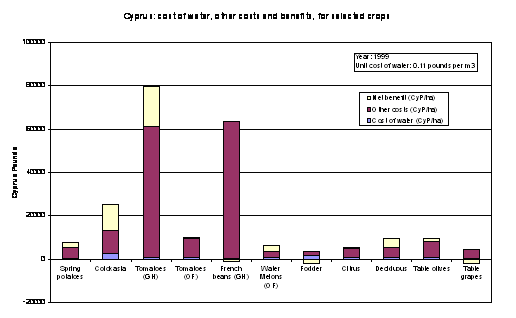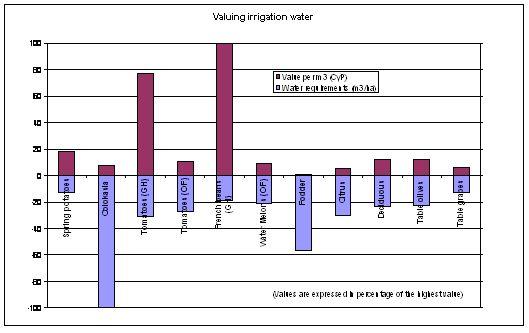In the global debate about increasing water scarcity, agriculture is often associated with inefficient, wasteful water use . This is supported by its poor performance in terms of “water use efficiency”, a term that was defined as the ratio between the irrigation water absorbed by the plants and the amount of water actually withdrawn from its source for the purpose of irrigation. The word efficiency, when its value is significant below 100%, implies that water is being wasted. However, from a water balance perspective, water not taken up and transpired by the crop plants, even if unnecessarily withdrawn from its natural course, is not necessarily wasted. Unused water may be used further downstream in the irrigation system, it can flow back to the river or contribute to the recharge of aquifers. Renewable freshwater is only effectively lost when it evaporates from the soil, is fatally polluted or when it joins a saltwater body.
This fact does not, by itself, deny justification of programmes aimed at increasing water use efficiently in irrigation. The adoption of water-saving technologies and improved water management is justified by the needs of higher equity within irrigation schemes, higher reliability of water service, reduced energy cost in cases when pumping is required, and when water withdrawal jeopardises the sustainability of the ecosystems. Rather than water use efficiency, the concept of water productivity is now widely accepted as a measure of performance in agricultural use. By definition, productivity represents the output of any production process expressed per unit of given input, in this case water. In agriculture, several types of output can be considered. In strict commodity production vision, the output is usually expressed in volumes or value for a given agricultural production.
Figure 1 shows, for a selection of crops, an estimate of water requirements in m³ per hectare and the value obtained per m³ of water. It is evident that crops with high water requirements, such as colokasia and fodder, yield a low value per m³ of water. Figure 2 shows, for the same selection of crops, the cost of water, other costs (labour, financial, etc.) and the benefit per hectare of the farmer. None of the crops presented in the example appears to be particularly sensitive to the cost of water. The water-greedy colokasia preents a high benefit for a relatively small cost. Greenhouse tomatoes appear to be profitable and little affected by the cost of water but the high incidence of other costs suggests that the farmer may be running high risks. Therefore, in this case, a shift in market prices could lead to a situation similar to that of french beans (large non-water cost and financial loss). Citrus, which account for 32% of irrigation water demand, exhibit a low value-in-use of water and modest net benefits, and invites to closer scrutiny in agricultural water policy.

Figure 1: Water requirements in m³ per hectare and the value obtained per m³ of water

Figure 2: Cost of water, other costs (labour, financial, etc.) and
benefits per hectare for selected crops
Consequently, in a context of growing water scarcity and increasing water prices, a mix of policies should foster agronomical research and extension services, addressing a large diversity of suitable crops. For the majority of small-scale farmers, support to collective marketing arrangements can help to improve crop planning and reduce the undertaken risks. With evolving EU policies, and as subsidies for agriculture phase out, other subsidies compatible or even supported with European policies can phase in. These can be designed to support the farming sector to produce high added-value fresh products for an increasingly sophisticated services and tourism sectors, and to enhance the role of farmers and rural population in protecting and enhancing natural and environmental resources.